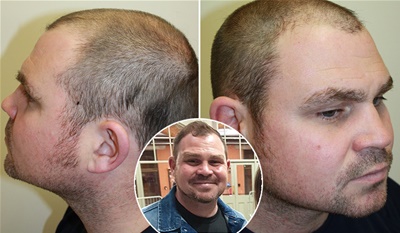 Some say age is just a number, but that certainly isn't the case for surgical hair restoration. There is no perfect age for getting a hair transplant, but there is such a thing as getting a procedure too young. A general rule of thumb is that no one under the age of twenty-five should get a hair transplant. However, there are some exceptions to the rule, but those cases are few and far between.
Some say age is just a number, but that certainly isn't the case for surgical hair restoration. There is no perfect age for getting a hair transplant, but there is such a thing as getting a procedure too young. A general rule of thumb is that no one under the age of twenty-five should get a hair transplant. However, there are some exceptions to the rule, but those cases are few and far between.
Do Not Get A Hair Transplant if You're Under Twenty-Five Years of Age
There are several reasons why you shouldn't get a hair transplant if you're under twenty-five, and we're going to go through them one by one. Genetic hair loss is a progressive condition that gets worse over time. In the beginning, the hairline starts to recede, and then the crown begins to expand until, eventually, the recession meets, and the entire affected area resembles a horseshoe pattern.
For a hair transplant to work, there needs to be a permanent donor supply. The back and sides of the scalp contain the donor supply. The hair in this area is resistant to the effects of DHT, the hormone responsible for causing hair loss. However, that isn't always the case. A condition called Diffused Unpatterned Alopecia (DUPA) affects the entire scalp- this condition is hard to diagnose at a young age, especially when the hair loss has just started. If you undergo a hair transplant procedure and you suffer from DUPA, not only will you lose the transplanted hair, but you will also have visible scarring.
Another big issue with many young men and women is their unrealistic expectations. Young patients generally want to restore all of their hair loss- hair for hair. Unfortunately, that isn't possible. We are born with approximately 100,000 hairs on our head. The top of the scalp has around 50,000 hair follicles, which translates to roughly 25,000 follicular units. The average person has anywhere from 5,000-8,000 follicular units available for transplantation, less than half of the initial density.
Building A Masterplan with an Ethical Surgeon is Vital
Every hair transplant patient should have a long-term plan for their hair transplant journey. The average hair transplant patient requires at least 2-3 hair transplants in their lifetime. Therefore, it's imperative to use your donor supply wisely and plan for future hair loss. No one has a crystal ball, no one can say with certainty where you will end up hair loss wise, so it's best to be conservative.
Most young patients don't plan for the future. You may think you won't care what you'll look like when you're fifty-years-old, but ask Brad Pitt, Matthew McConaughey, and Ben Affleck if they don't care what they look, and I'm sure you'll hear differently. As long as you're alive, you are going to care. There is life beyond your 20s. Even though it may seem like losing your hair is the end of the world, it's not.
How Do You Build A Masterplan?
First, you need to find a quality hair transplant surgeon, but be careful. There is a lot of misinformation, marketing, and gimmicks going around, especially on social media. It's essential to choose a surgeon who has built their reputation off actual patient reviews and results instead of marketing and ads. The best place to find hair transplant reviews are hair loss forums like the hair restoration network.
Luckily, most surgeons can provide a masterplan without having to go to their office. To submit a virtual consultation and obtain a masterplan by a pre-screened surgeon approved by thousands of hair transplant patients, click HERE. Remember, lists are starting points for research. Consult with many surgeons to get a consensus on how many grafts you will require over your lifetime.

